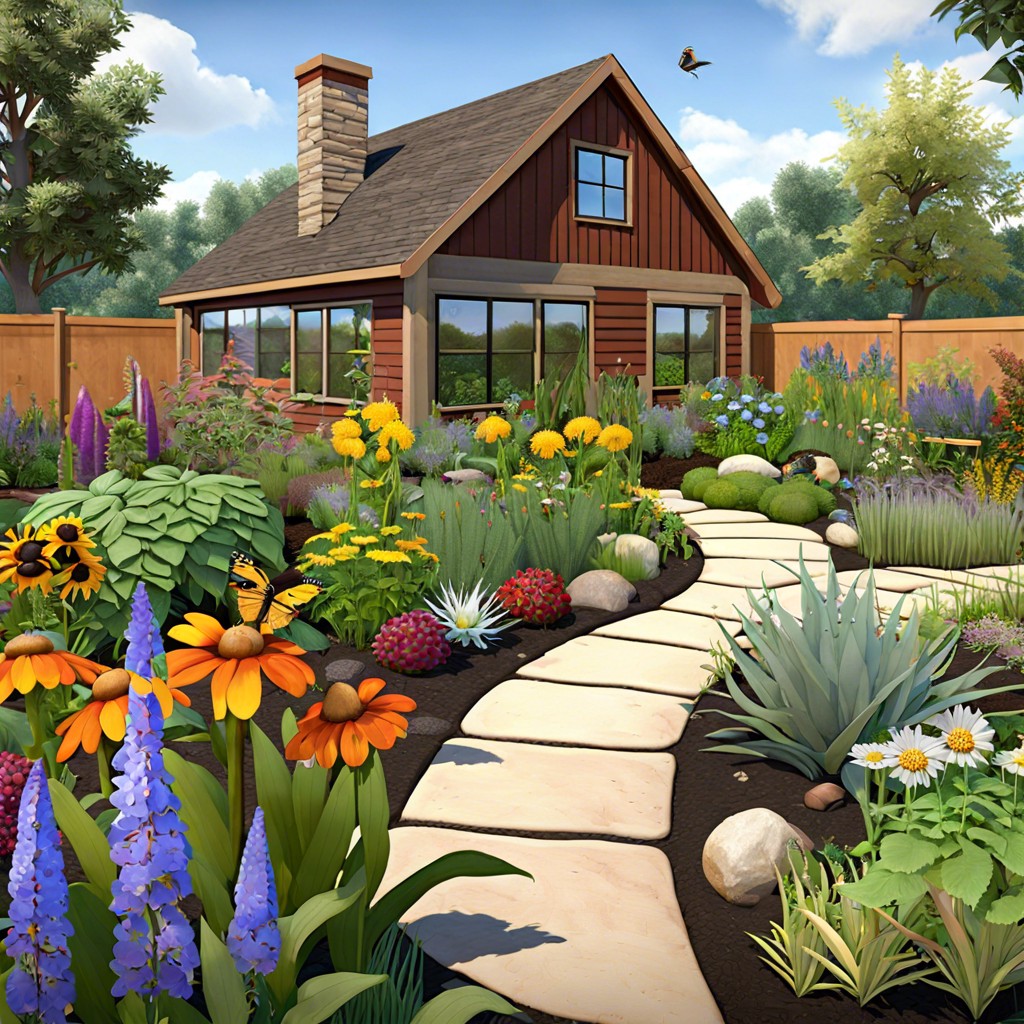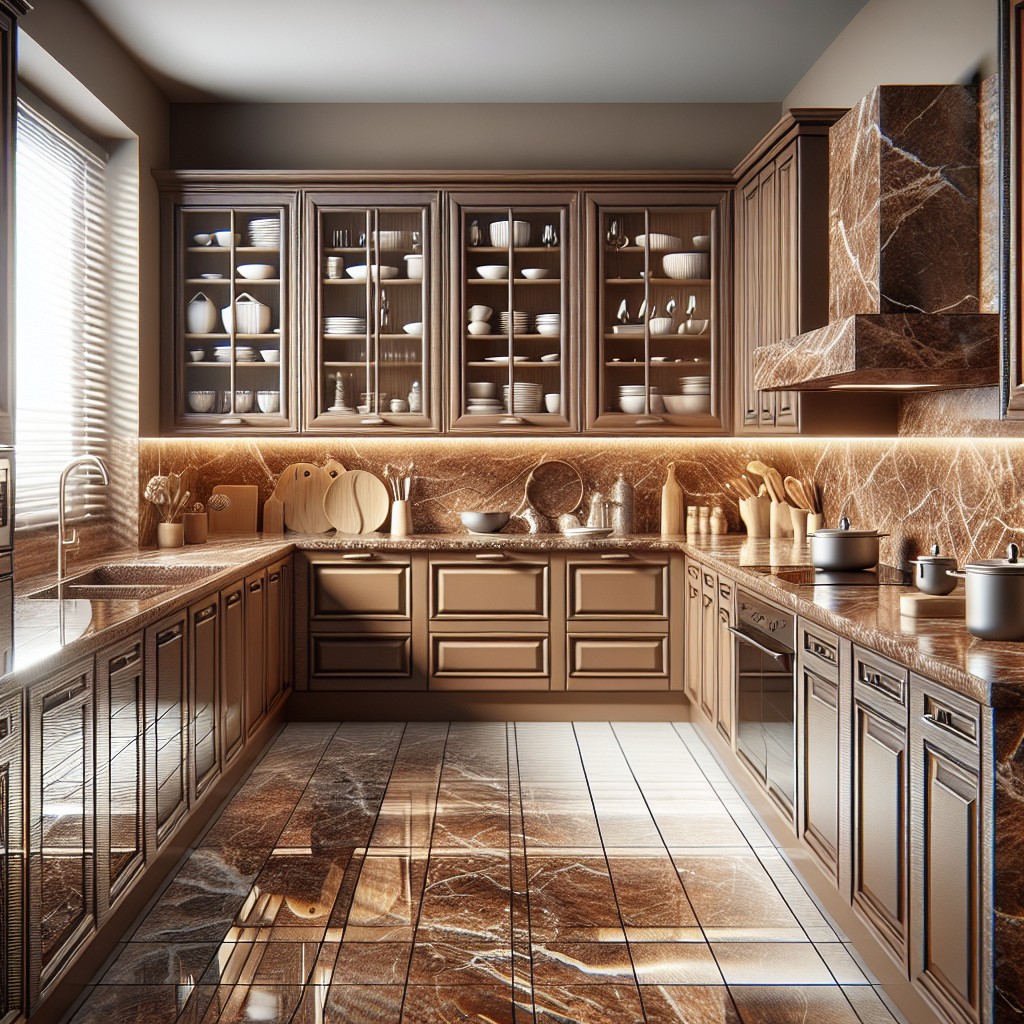Last updated on
Opt for composite skirting boards because they blend seamlessly with any decor, bringing a touch of elegance to your rooms.
These are my unique design concepts made using design tools. I hope you find them inspiring!
Skirting boards may seem like a small detail in home decoration, but they can transform the overall aesthetic of a room. While the internet is brimming with common composite skirting board ideas, this article aims to offer a fresh perspective with unique, innovative concepts. The goal is to provide design solutions that you might not have considered before.
At the end of this exploration, resources will be provided to help you implement both pre-existing and these new ideas. So, let’s embark on this journey of discovering novel approaches to composite skirting boards.
What's Inside
Eco-friendly Composite Skirting

Adopting eco-friendly practices in your decoration is a worthy consideration. One strategy you can adopt involves using composite skirting made from recycled materials. Not only do these provide a green solution for your home, but they also offer quality that is often superior to traditional materials.
Reasons to consider this type of material include:
- Durability: They are impact-resistant, meaning they can withstand the odd knock or two.
- Cost-effective: While the initial cost may seem high, the long lifespan of these boards pays off in the end.
- Low Maintenance: They do not require painting or staining, saving you a lot of time and effort.
- Appearance: Available in various finishes, you can easily find one that fits your property’s style and décor.
- Reduces Waste: As they are made from recycled components, choosing these helps reduce the amount of waste that ends up in the landfill.
In a nutshell, this approach to skirting not only offers an aesthetic enhancement to your home but also contributes positively to the environment.
Tiered Deck Skirting Concept
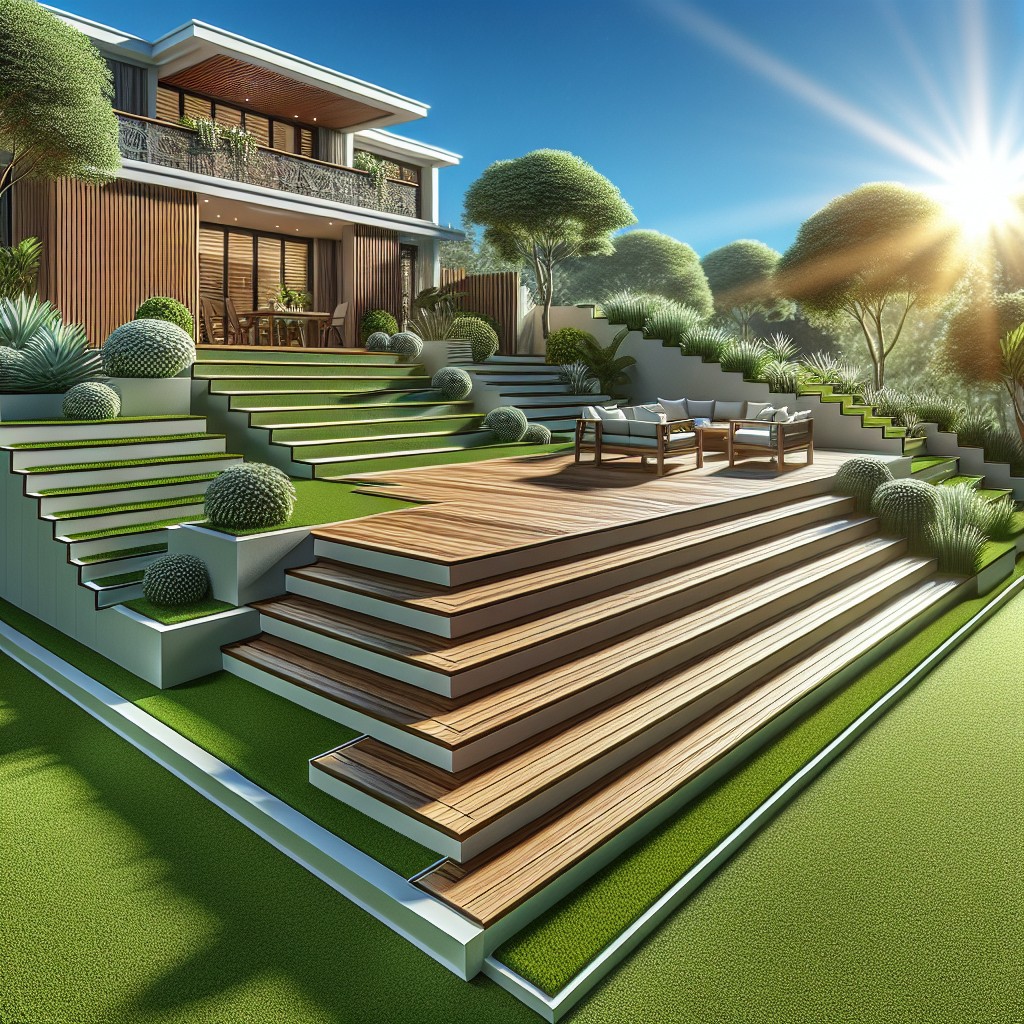
Taking a multi-dimensional approach to your deck skirting can add depth and visual interest. With a tiered concept, each level or ‘tier’ can host a different pattern, color, or material, creating a segmented yet cohesive look. Before starting installation, gather inspiration and aim to maintain a balance between variety and harmony.
Advantages of a tiered system include easier installation because you can work in sections. This also allows for creative uniqueness: each tier or section can be easily replaced or updated to freshen the look. Consider integrating concealed storage or vented spaces in some of the tiers, enhancing functionality alongside beauty.
In a smaller space, using lighter colors for upper tiers and darker shades lower down can add a sense of height. In a larger outdoor area, reverse this to create a cozy, intimate setting. Remember, the goal is to enhance, not overpower, the existing architecture. Finally, consider how the skirting will compliment not just the deck, but the surrounding landscape. Visualize the finished effect in all seasons – from the lush greenery of spring to the stark silhouettes of winter.
Two-tone Composite Skirting
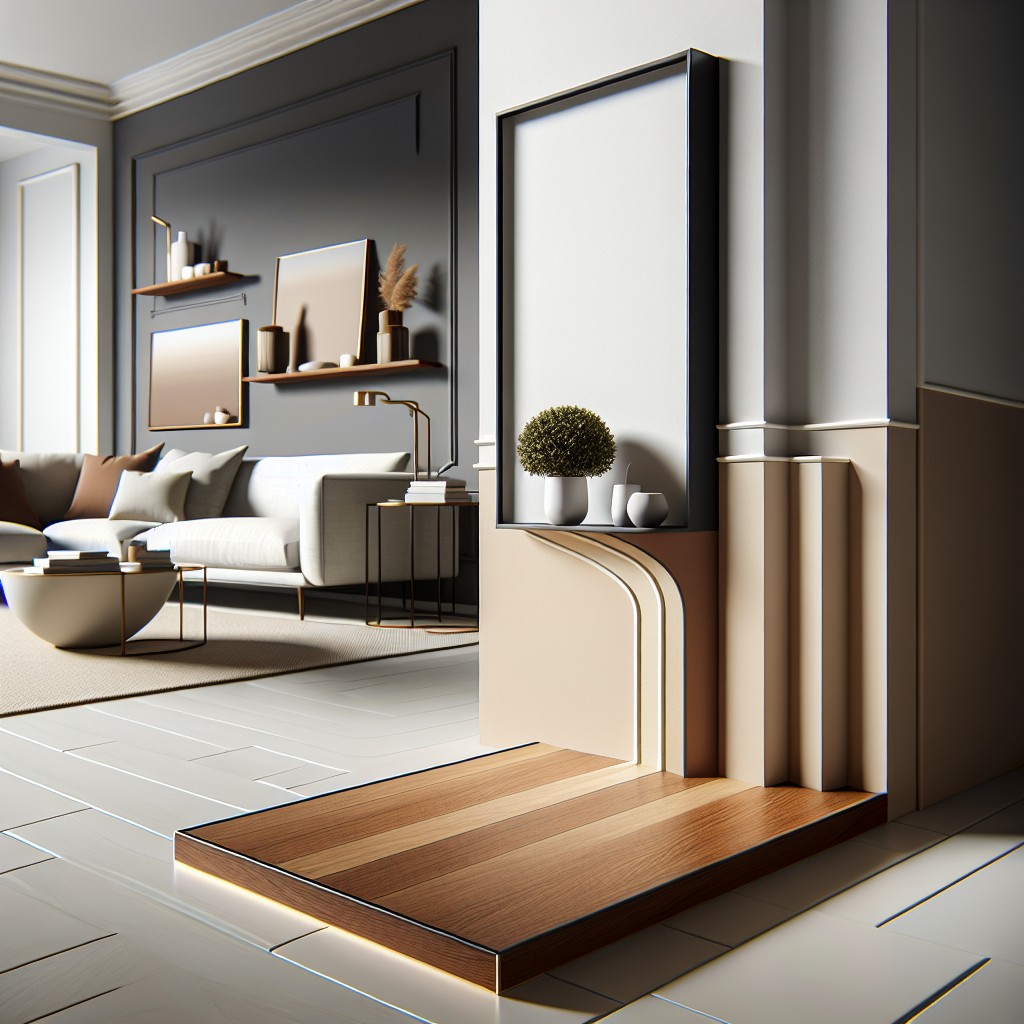
The uniqueness of two-tone composite skirting lies in its ability to blend with a diverse range of interior settings. Typically, designers pair a lighter shade with a darker complementary hue, a striking combination that can visually enhance your space.
Here are key points supporting its appeal and usage:
- Versatility: The dual tone offers an option to match with both light and dark furniture or flooring, bridging contrasting elements in your decor.
- Illusion of depth: The contrasting colors can create an illusion of depth, making your room appear more spacious.
- Durable: Like all composite materials, the two-tone skirting board is long-lasting and withstands wear better than its wooden counterparts.
- Easy to maintain: Composite material doesn’t stain easily so it’s simple to clean. Lighter hues hide dust and scratches better, while the darker tones are ideal for high traffic areas.
For a successful installation, ensure that both colors are in the same color family or are complementary. This creates a cohesive, stylish look. Explore various combinations to find the perfect match for your home interior.
Texture Panel Deck Skirting
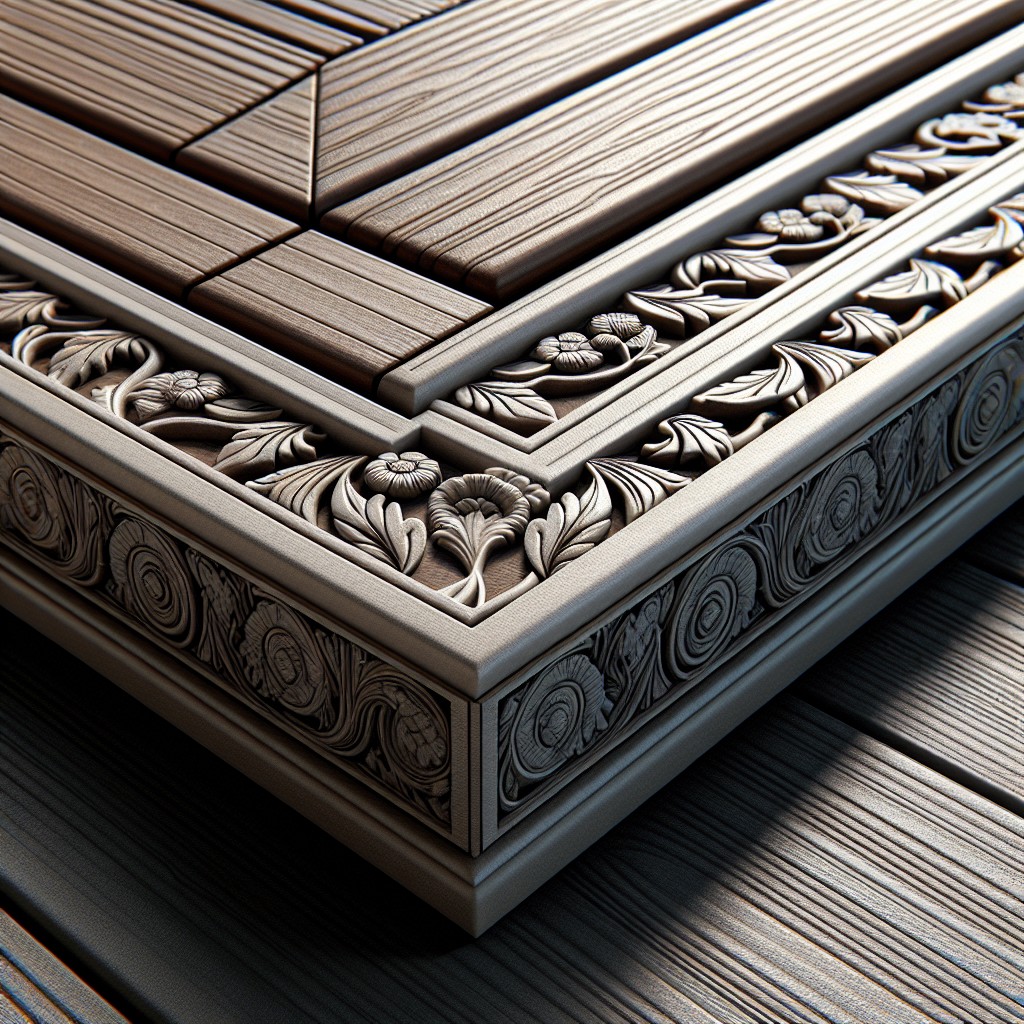
Textured panels offer visual appeal and practicality. They come in a broad variety of designs, making it easy to find a match that suits your preferences. With its bumps, ridges, and indents, this option gives a feeling of depth and dimension, setting it apart.
1. Versatility: Aside from aesthetic allure, the textures naturally camouflage any dirt or wear it may suffer from being outdoors.
2. Easy Maintenance: Easy to wipe clean and non-absorbent, these boards are practical for high-use or outdoor areas.
3. Custom Options: Manufacturers often provide the opportunity to customize the detailing on the panel — a bonus for achieving a unique look.
4. Long Lasting: No need to resist natural weather travesties; textured panels are designed to endure extreme conditions.
5. Flexibility: Can be used in tandem with other skirting styles for layered, robust designs.
In essence, using textured panel deck skirting opens a universe of design opportunities that can be tailored to meet exact tastes and desires. By exploring the different texture options available, you can elevate the overall appeal of your deck, turning it into a true outdoor living oasis.
Imitation Rock Composite Skirting
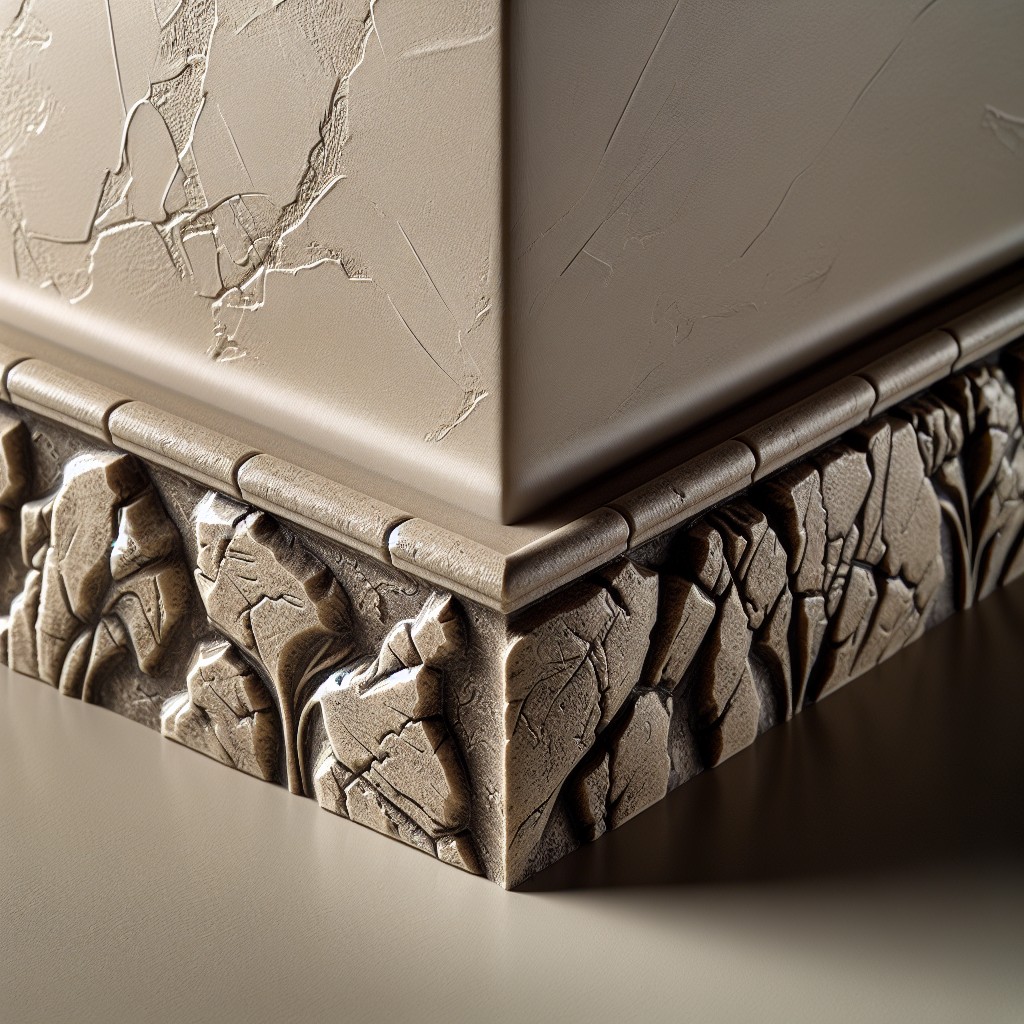
Emulating the rugged aesthetics of nature, this design uses advanced technology to mimic the look and texture of natural stone. Its versatility lies in the broad range of rock styles it can imitate, from weathered limestone to smooth granite, adding an enchanting rustic charm to your home decor.
Key features of this unique style include:
- Realistic appearance: Through meticulous design processes, it replicates the varying textures and hues found in nature, giving the illusion of real rock.
- Easier installation: Since these boards are composed of composite materials, they are more lightweight than actual stone, making them easier to install.
- Cost-effectiveness: It provides the visual appeal of rock without the high cost associated with sourcing and installing genuine stone.
- Durability: These boards stand up well to wear and tear, ensuring they maintain their beautiful rock-like appearance for longer.
By choosing this skirting option, you can keep your home looking stylish and sophisticated, while benefiting from the practical aspects of composite materials.
Chalkboard Surface Skirting
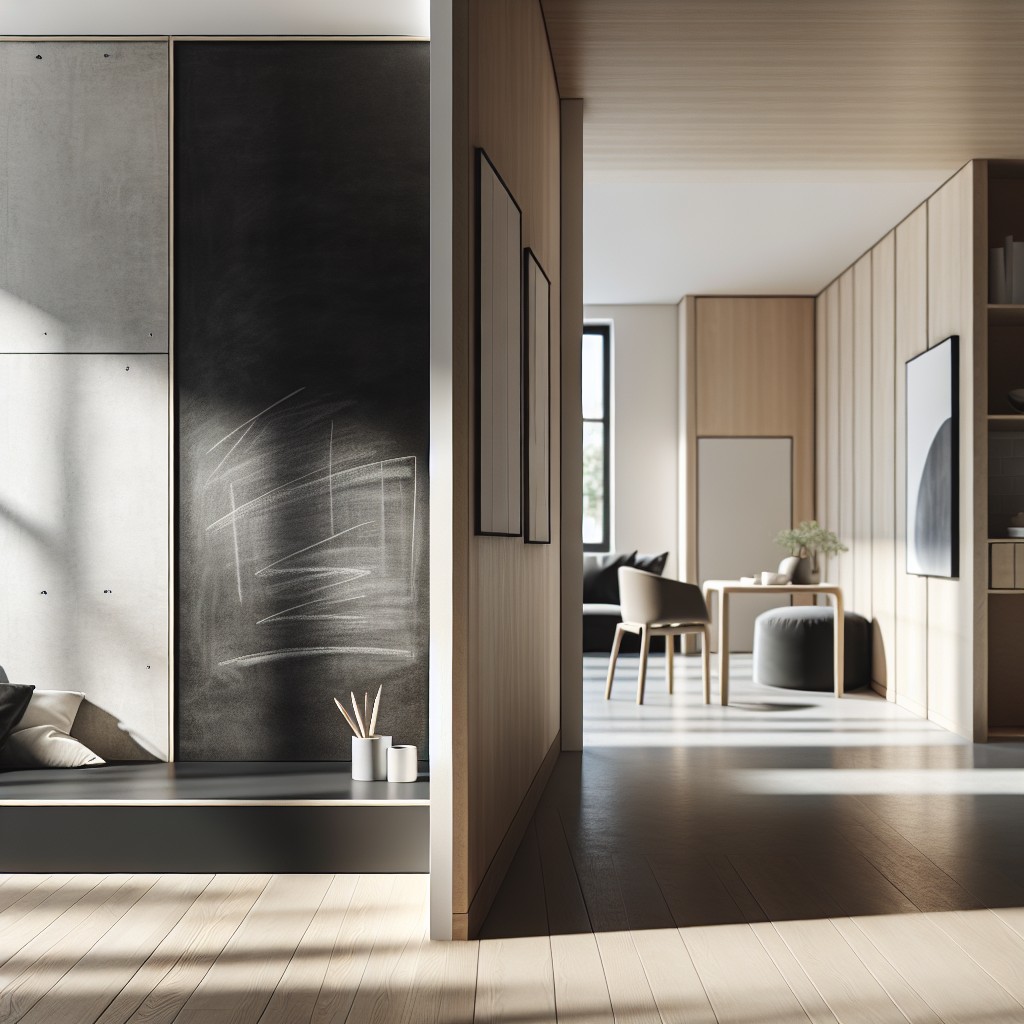
A chalkboard surface finish on your composite skirting offers a unique aesthetic while providing practicality. It brings in a rustic touch that contrasts well with modern or minimalistic furniture.
Beyond merely enhancing your decor, it’s interactive, allowing children to express their creativity or doubling as a handy memo board for reminders and messages.
To achieve this:
- Choose a smooth composite skirting board; it will create a better writing surface.
- Apply several layers of chalkboard paint, allowing each to dry thoroughly.
- After it’s dry, prime the surface by rubbing a stick of chalk sideways over the entire surface and then erase it off.
This type of skirting makes space dynamic and adaptable to various occasions and purposes. However, ensure to dust regularly for a clean appearance and easy writing.
Composite Skirting Paired With Outdoor Lighting
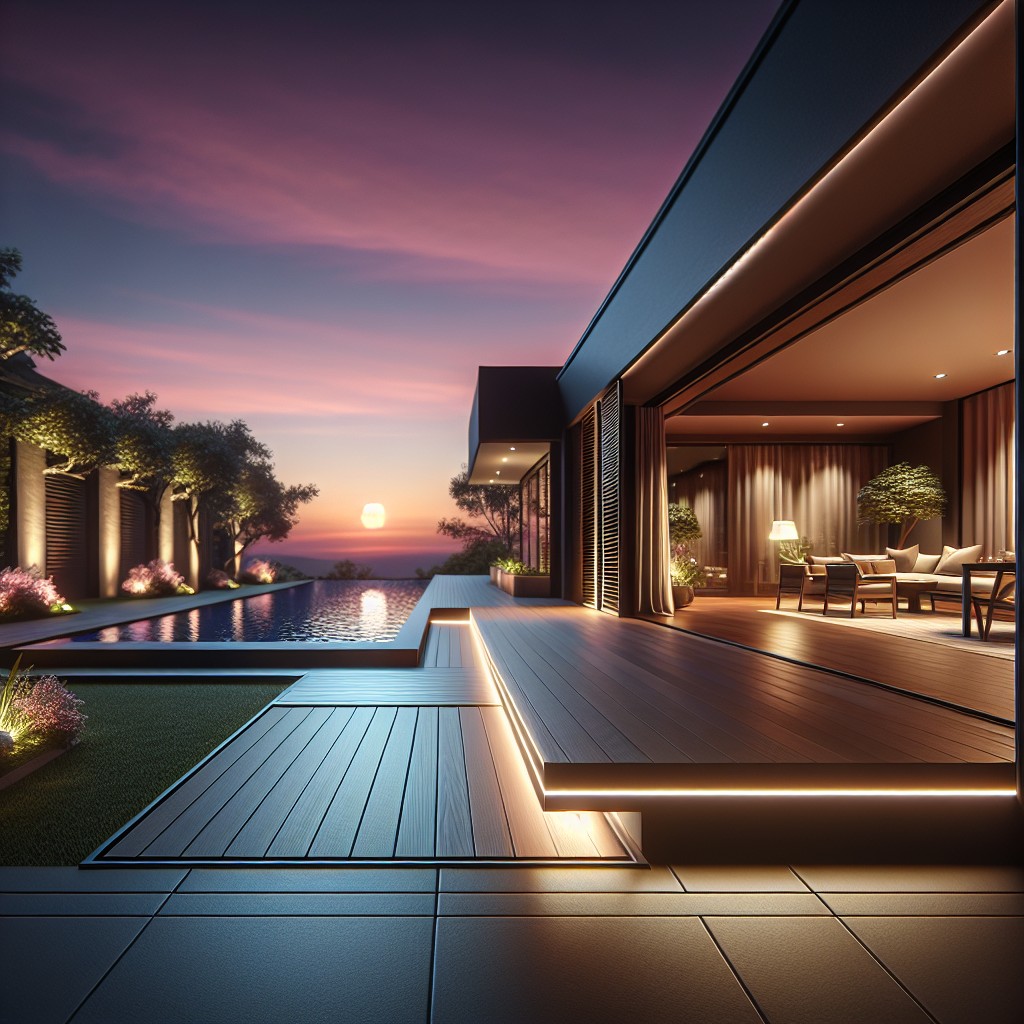
This pairing often tantalizes the eyes, adding an inviting atmosphere to any outdoor area. Opt for soft, ambient lighting that highlights the unique pattern and color of composite skirting. This can be particularly captivating during the evening, presenting an enchanting play of lights and shadows.
Consider strip lights applied along the top edge of the skirting, or ground-level spotlights angled upwards. Solar-powered stake lights can also be a good choice for energy efficiency, dotting them around the garden for a fairy-tale feel.
Outdoor lighting elements need to be weather resistant and durable. LED lights, for instance, are perfect as they are energy-efficient, bright, and last longer compared to traditional lighting.
Remember, the combination of composite skirting and outdoor lighting should not just fulfill a practical aspect but also offer an artistic touch to amplify the visual appeal of your space.
Jewel Tone Composite Skirting
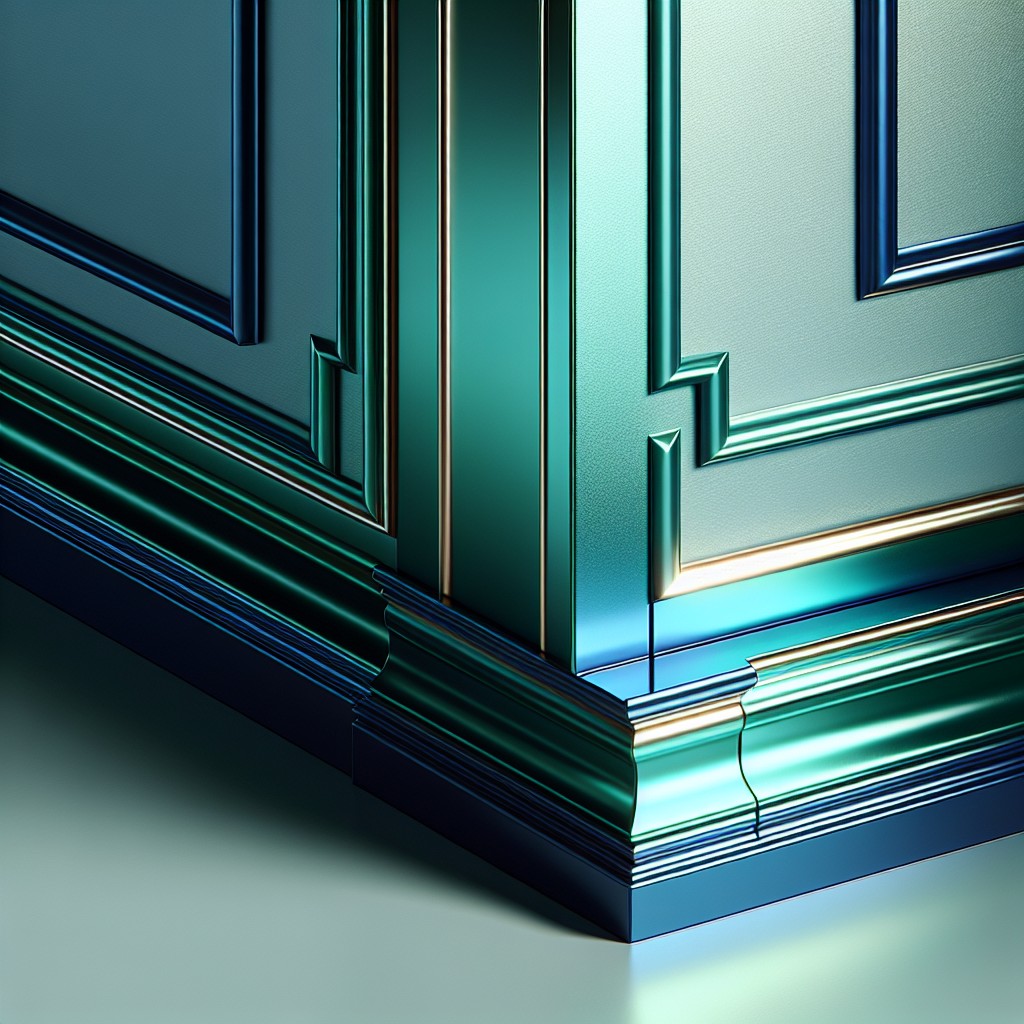
Rich, vibrant, and deeply saturated, jewel tones can inject life into your composite skirting. A deep amethyst purple, emerald green, or even a ruby red can exude a luxurious feel, setting your space apart.
To nail this approach, consider these tips:
- Pair with Neutrals: Jewel tones pop best when combined with neutral colors like grey or beige. This balance ensures the vibrant hues don’t overpower the room.
- Coordinating Colors: To create a harmonious space, choose two to three jewel tones that tie in with other elements of the room.
- Proper Lighting: Jewel tones need good lighting to shine. Ensure your space has plenty of natural or artificial light to bring out the shimmering finish of these stunning hues.
- Less is More: While jewel tones are striking, they can also be intense. You might want to limit using them to one wall or as an accent on details.
Adopt these strategies to give your space an elegant, eye-catching appeal with jewel tone composite skirting.
Vertical and Horizontal Striped Skirting
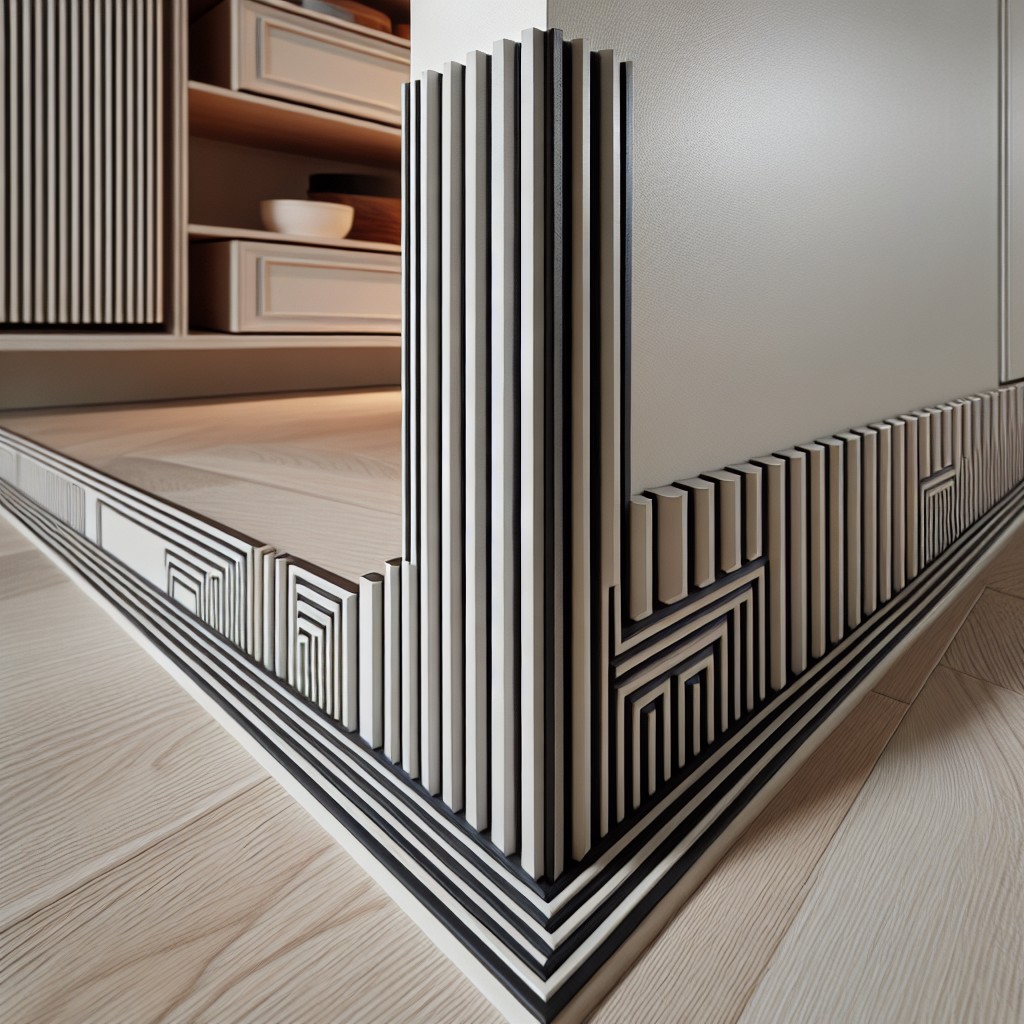
Running stripes in different directions can make a substantial impact on design conception. Vertical lines tend to elongate the visual height of a room, adding the illusion of higher ceilings. In contrast, horizontal stripes bring in a sense of width and spaciousness, helping smaller areas in your home seem more substantial.
To play with this idea, you may choose to alternate between vertical and horizontal stripes at regular intervals. This can create an intriguing, engaging pattern. Also, alternating between contrasting colors can enhance the aesthetic appeal and draw attention to your expertly designed interiors.
When selecting materials for this design, ensure they are sturdy and able to stand the test of time, even with the intricate patterning. Remember, while the stylistic element is crucial, functionality and durability should underpin your choice. Materials such as medium-density fiberboard (MDF) can be a good option due to their cost-effectiveness and versatility.
Installation might require more precision due to the pattern intricacy, so considering professional help at this stage may be advantageous. However, if you’re a do-it-yourself enthusiast, tape can aid in defining lines and ensuring a smooth finish.
In the end, this design provides a striking visual, adds a unique flair to your house, and serves as a conversation piece for your visitors.
Vented Composite Skirting for Humidity Control
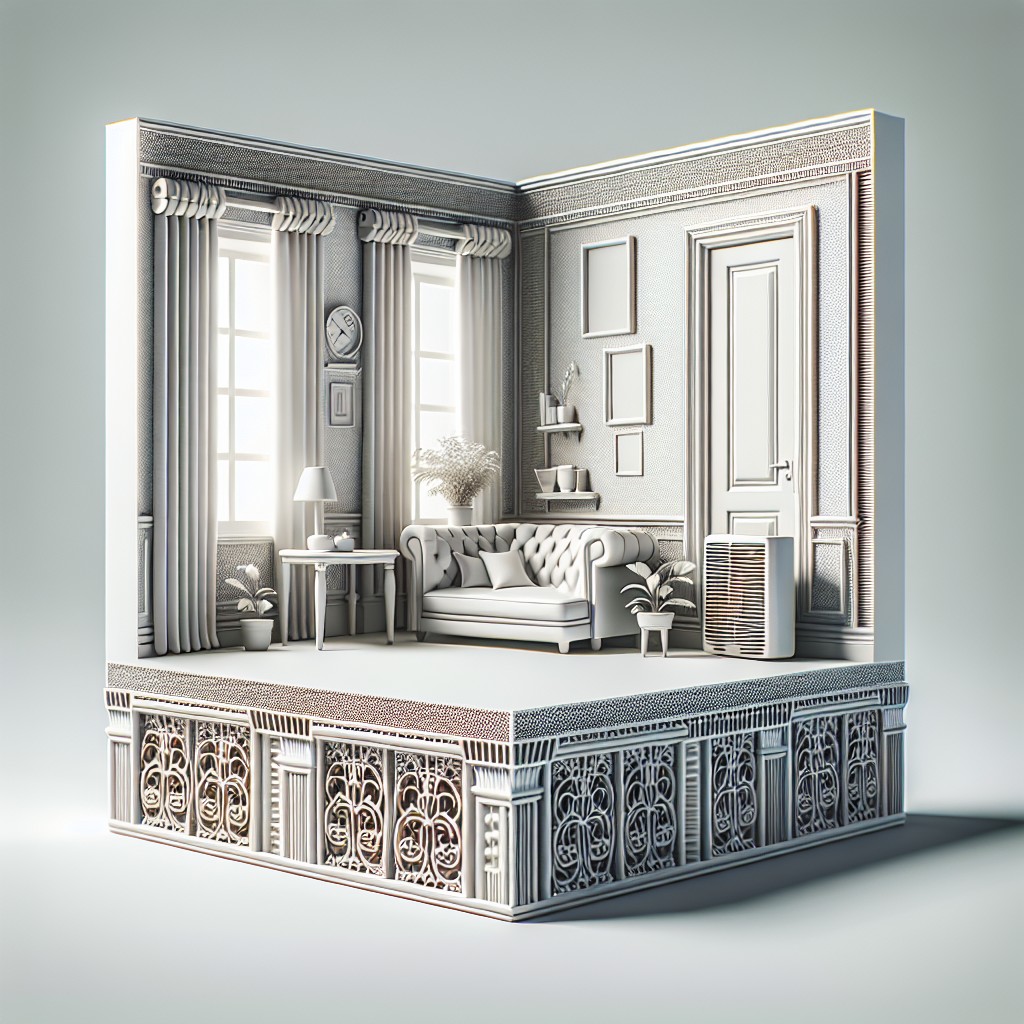
Having a vented skirting offers the much-needed relief to your home during damp weather. The design allows airflow, which reduces moisture build-up, crucial in preventing mold or mildew on the walls.
Several options exist in terms of style, vent size, and placement, but consistency and adequacy of ventilation should be the primary focus.
When choosing vented composite skirting, there are a few considerations:
- Material design: Choose varieties that promote airflow while resisting decay and pests.
- Climate: Your local weather conditions dictate the vent size and frequency.
- Height off the ground: Skirting closer to the ground needs more vents due to increased moisture.
- Stylish Vents: Explore decorative vents that add architectural interest to your exterior.
A well-vented skirting not only protects your home but also enhances aesthetic appeal when chosen thoughtfully.
Mix and Match Composite Materials
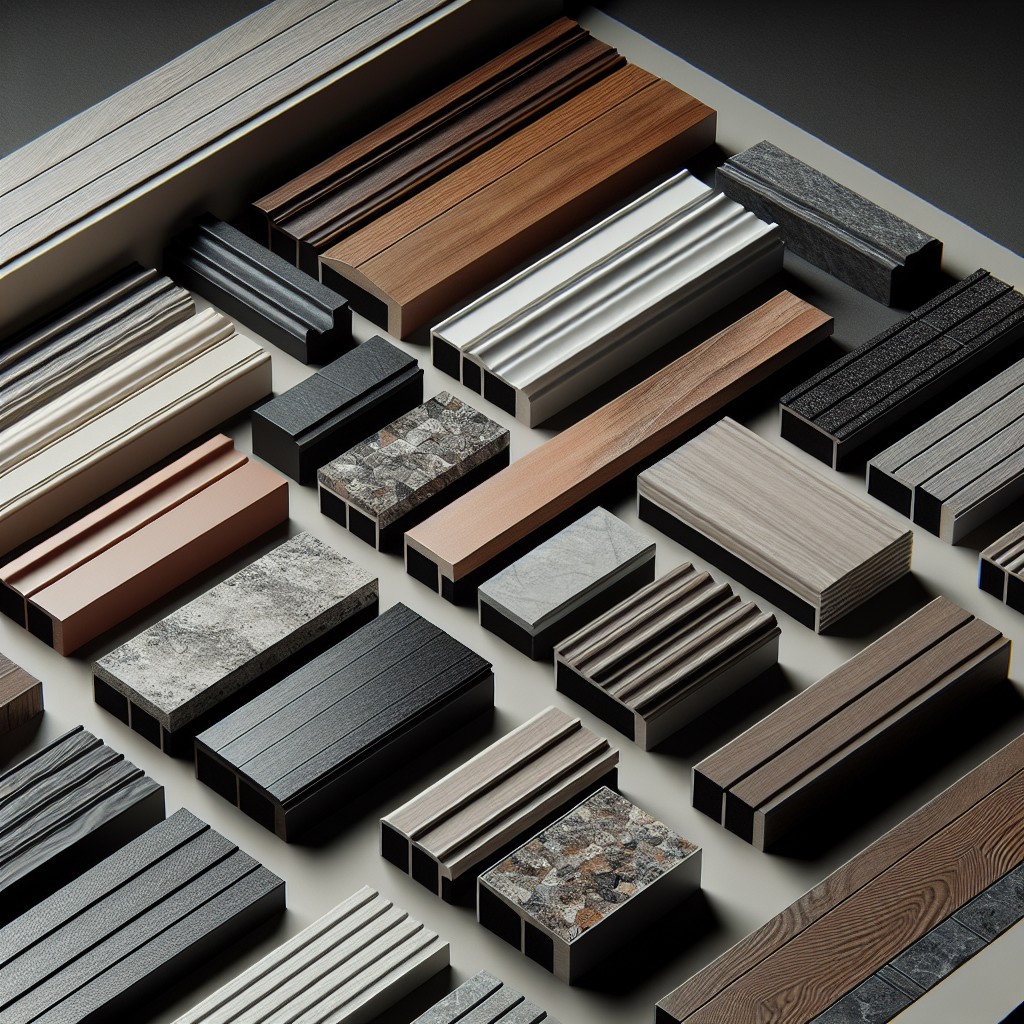
Boldly experiment by combining different types of composite materials to enhance the uniqueness of your skirting board. This inventive approach not only allows a play of textures and colors but also promotes durability.
1. Pair wood-plastic composites with solid wood for a balance between traditional warmth and modern resilience.
2. Apply a blend of high-density polyethylene (HDPE) composite and capped composite for a unique texture and an insurance against rot.
3. Integrate different grains of wood-polymer composites in alternating boards to generate a visually pleasing pattern.
Remember, the key is to strike a balance between aesthetics, cost-effectiveness, and usability. While it may take a few tries to perfect, a mixed material skirting could just be the standout feature your home needs.
Metallic Finish Composite Skirting
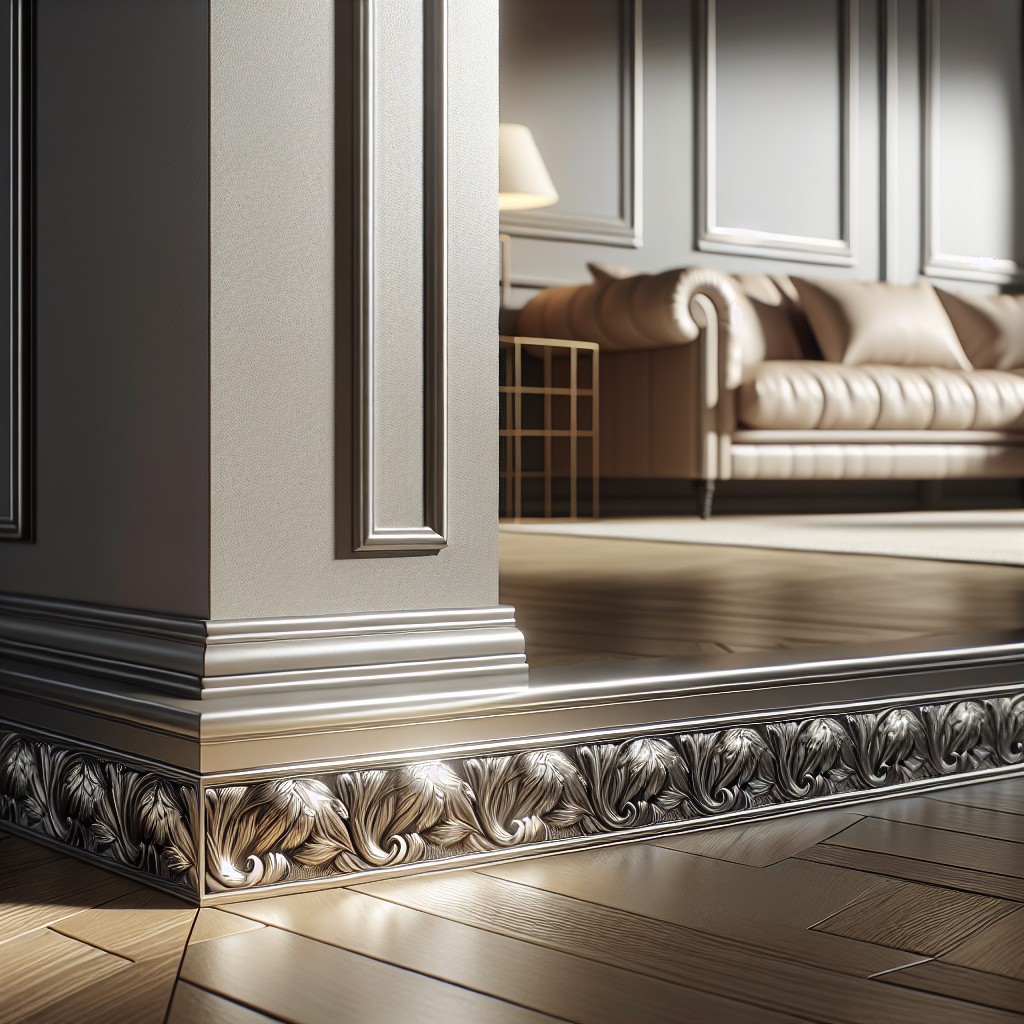
Crafting a metallic finish on composite skirting can result in a stunning visual impact. To achieve this aesthetic, a surface-level metallic paint is often applied. This type of finish is not just a feast for the eyes but also adds a layer of durability.
Points to consider when opting for metallic finish skirting:
- Choose from wide range of metallic shades: Silver, gold, copper or bronze, they all lend a distinctly modern edge to your skirting boards.
- Pair with neutral walls: Metallic skirting pairs best with neutral wall colours. It helps the metallic finish pop and adds elegance to the room.
- Use in moderation: Metallic finishes are best used sparingly. Overdoing it can lead to an overwhelming effect, detracting from the intended result.
- Protection: Metallic paint on skirting not only adds aesthetic appeal but also provides an extra level of protection against everyday wear and tear.
Remember, the goal is to create a unique and classy look with a finish that is durable and adds character to the room.
Deck Skirting With Built-in Planters
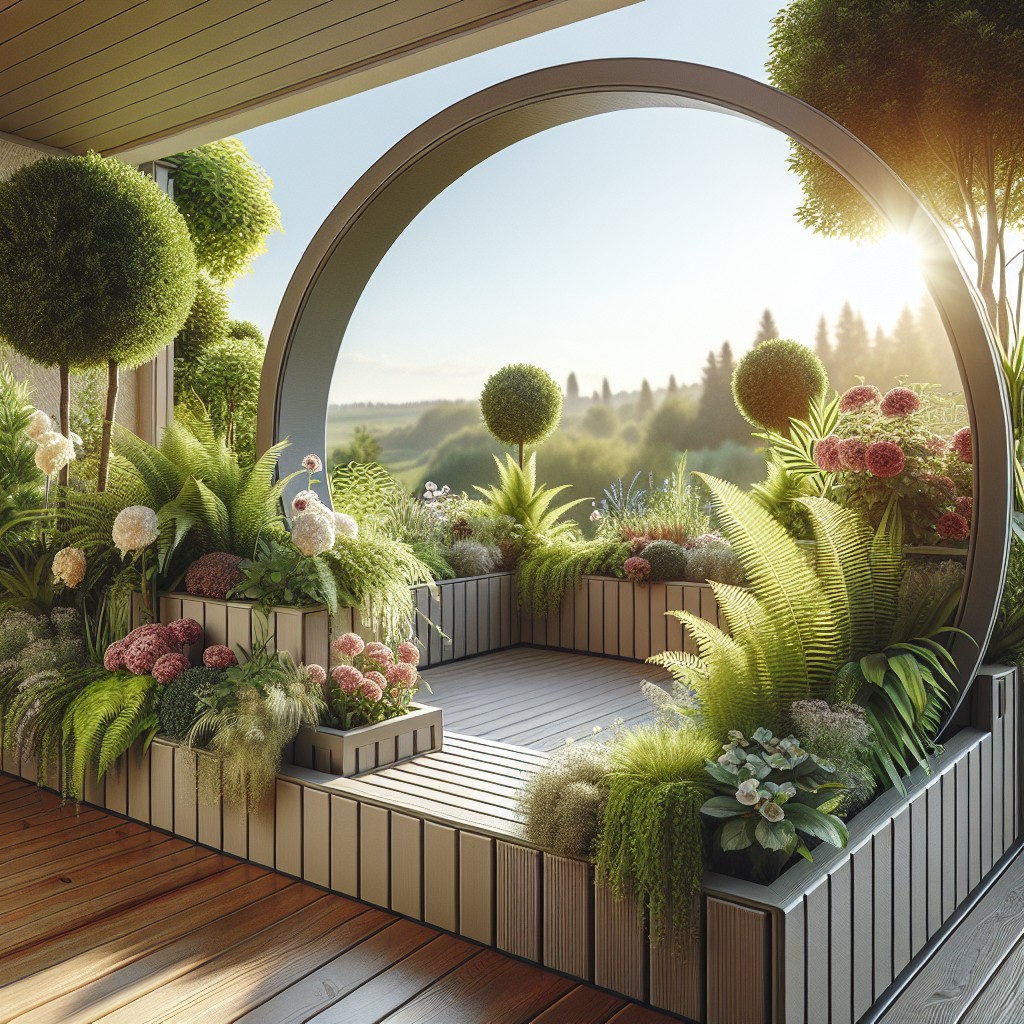
Embracing greenery is a trend that never fades. Incorporating built-in planters in your composite deck skirting can add a dash of nature while evenly maintaining the flow.
Here are some key points to help you understand this concept:
- Material: Consider composite materials that can stand up to moisture and dirt. Some materials might wear out with constant contact with soil and water.
- Design: The planters can be executed in various designs, from a long rectangular shape to small latticed pockets, depending on the types of plants you wish to incorporate.
- Plant Choice: Opt for plants that thrive well in your locality and require maintenance that suits your lifestyle. For instance, choose succulents for minimum maintenance.
- Drainage: Ensure adequate drainage mechanism to avoid water logging that could foster rot and mold growth.
This concept not only adds to the aesthetics of your home but also serves as an added function. It’s a testament to how even the skirting can be utilized creatively.
Colored Composite Skirting to Match Exterior Paint
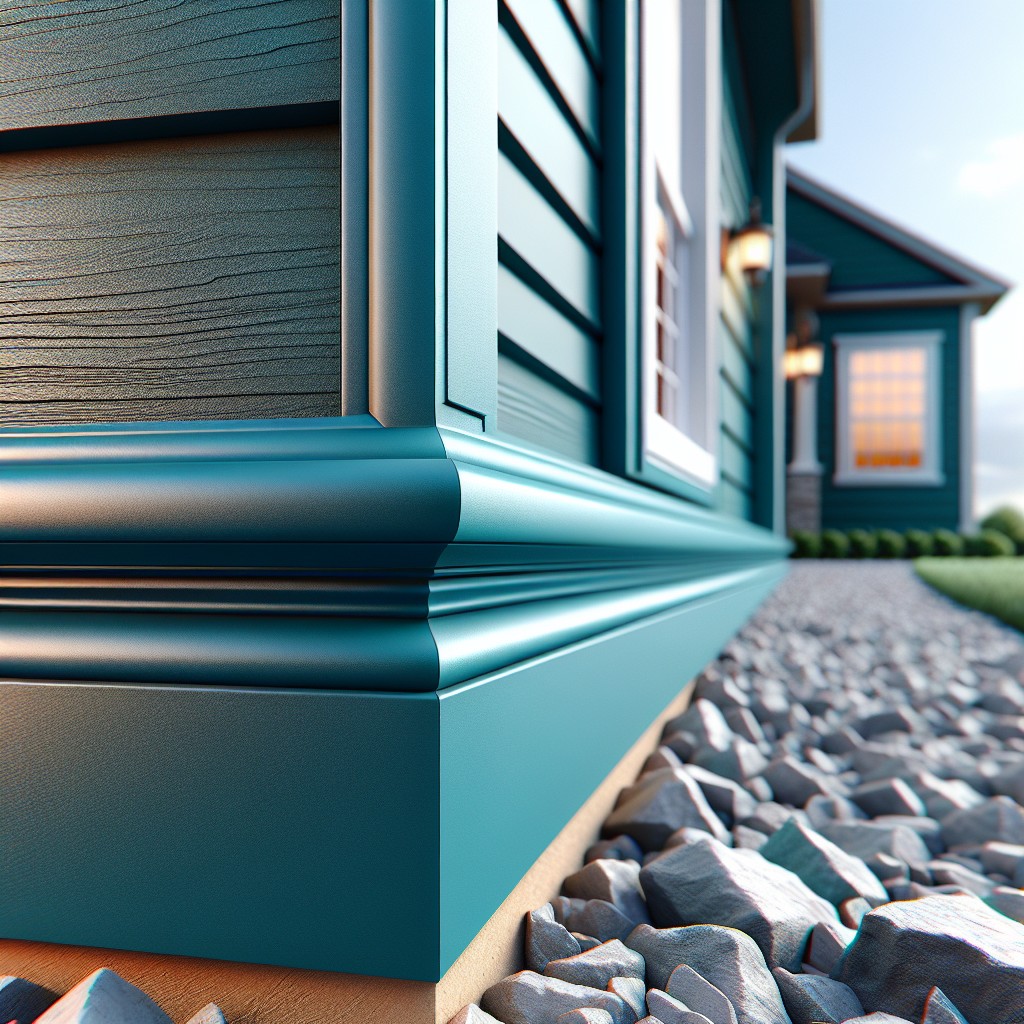
Choosing the right color for your composite skirting can greatly enhance your home’s exterior appeal. Create a harmonious look by matching the skirting with the color of the exterior paint.
Here are a few pointers to consider:
- 1. Light colors can make your home look larger and more inviting while dark shades can give it a solid, grounded presence.
- 2. To highlight distinctive architectural features, use contrasting colors.
- 3. If you have a multi-story home, you may want to consider using a lighter color for the upper part and a darker shade for the skirting to balance the design visually.
- 4. Complement your exterior paint color but don’t choose an exact match. A slightly lighter or darker shade can provide a subtle distinction that brings depth and dimension.
- 5. Ensure the color harmony between your home exterior, composite skirting, and your landscaping for a cohesive overall look.
Zen Garden Inspired Deck Skirting

Following the principles of Zen philosophy, you can design your deck skirting using composite materials fashioned to mimic the serene nature of a traditional Zen garden. Choose soft, neutral tones that evoke the feeling of sand or stone, aiming to reproduce the calming aura of these spaces.
1. Use understated, earthy colors: Earth color spectrums like beige, brown, or gray will provide an organic feel to your deck skirting.
2. Go for minimalism: Reflect the essence of Zen with simple, uncluttered designs. A dense, clutter-free pattern will work best.
3. Replicate natural textures: Visual representations of sand ripples or flat, smooth stones can mirror Zen garden elements. A composite material with a subtle texture can add to this effect.
4. Blend with surrounding greenery: If your deck area hosts plants and bonsai trees, ensure your skirting complements this environment, creating a harmonious connection between structure and nature.
Incorporate the principles of Zen into your composite skirting design to create an outdoor space sparking tranquility and peace.
Mid-century Modern Deck Skirting Ideas
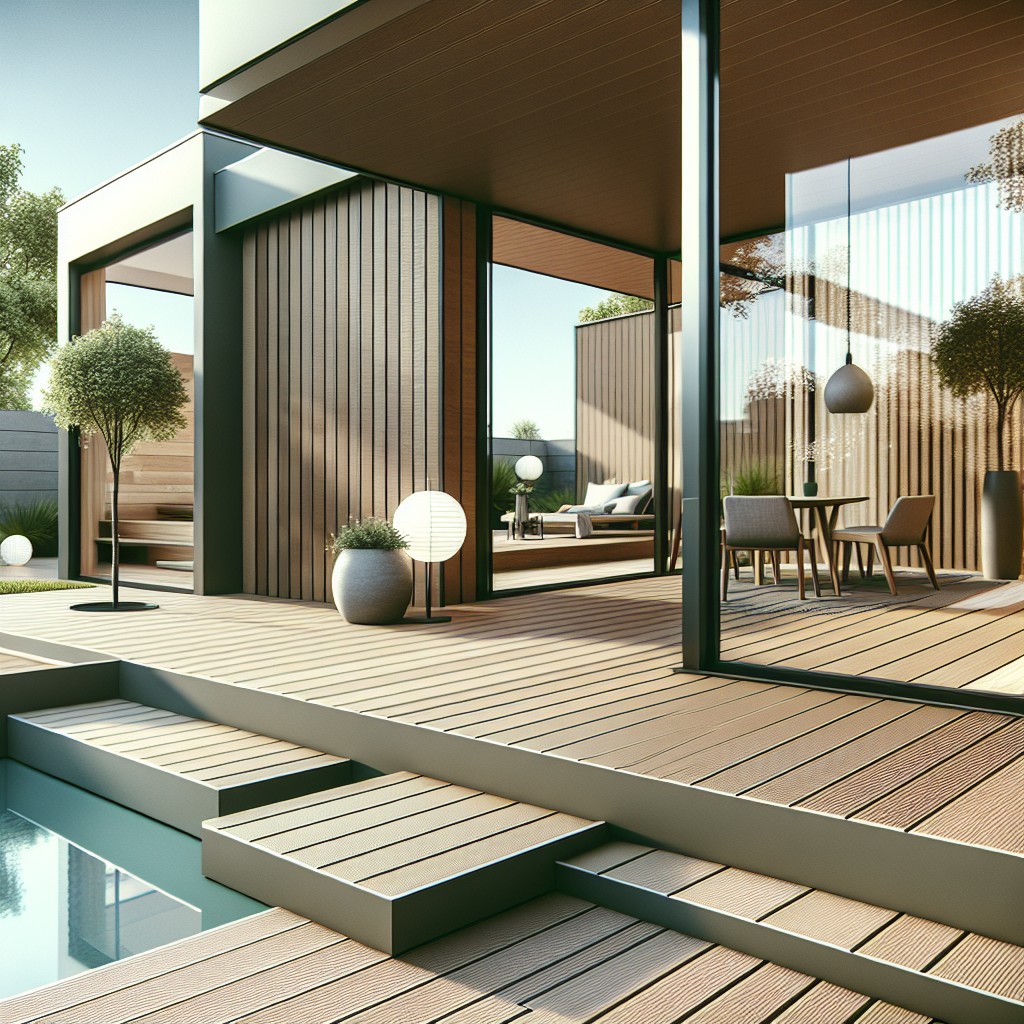
Mid-century modern designs take cues from the architectural, interior, product, and graphic designs from the mid-20th century. Channeling these elements, you can create an aesthetically pleasing deck skirting style.
Here are key ideas:
- 1. Geometric Shapes: Think asymmetrical forms. For an authentic mid-century look, incorporate geometric cut-outs into your composite skirting.
- 2. Neutral and Bold Colors: Embrace a mix of both. Use organically inspired neutrals as the base, accentuated with daring hues like tangerine, avocado, and mustard.
- 3. Function and Form: Make sure your skirting serves a functional purpose, but also contributes to the overall design. Skirting can be used for storage or as an extra seating area.
- 4. Clean Lines: Mid-century modern is synonymous with smooth, uncluttered lines. Linear composite boards placed horizontally can achieve this effect.
- 5. Natural Influences: Complement your skirting with plants or integrate a trellis pattern to echo mid-century’s love for nature.
Remember, composite skirting materials offer durability, ease of maintenance, and versatility in design, perfect for recreating this beloved style.
Composite Skirting Featuring Tribal Prints
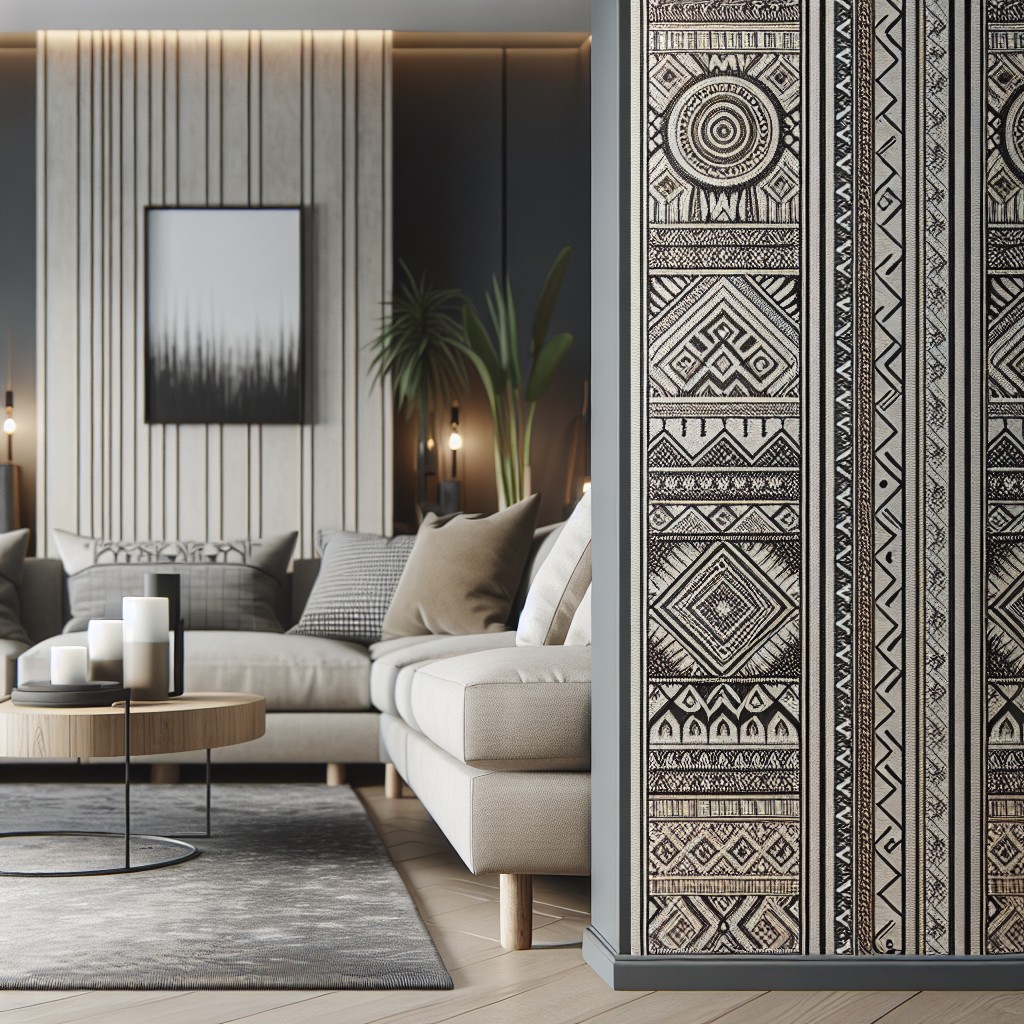
Tribal prints can add an exotic flair and breathe new life into an otherwise plain room. These designs will virtually transport you to distant lands, highlighting cultures from across the globe.
1. Cultural Fusion: Using a composite skirting with tribal prints can incorporate a fusion of cultures into your décor. It bridges urban aesthetics and artistic traditions, making it perfect for eclectically styled homes.
2. Invigorating Textures: Characterized by intricate patterns and rich textures, this type of skirting board can enhance the visual effect on the lower part of your walls, creating a finishing touch that speaks of love for world art.
3. Diversity in Patterns: Tribal prints can range from African motifs to Aztec designs or even Maori patterns. So, you’re not limited to one type of look.
4. Colour Usage: While it’s common to see earth tones in tribal skirting boards, don’t be afraid to play with bright colors. Vivid, biophilic hues can uplift the ambiance.
Remember to consider the overall theme of your room before opting for tribal print skirting. It should harmoniously blend with the rest of your decor and not clash with it.
Intricately Carved Composite Skirting Boards
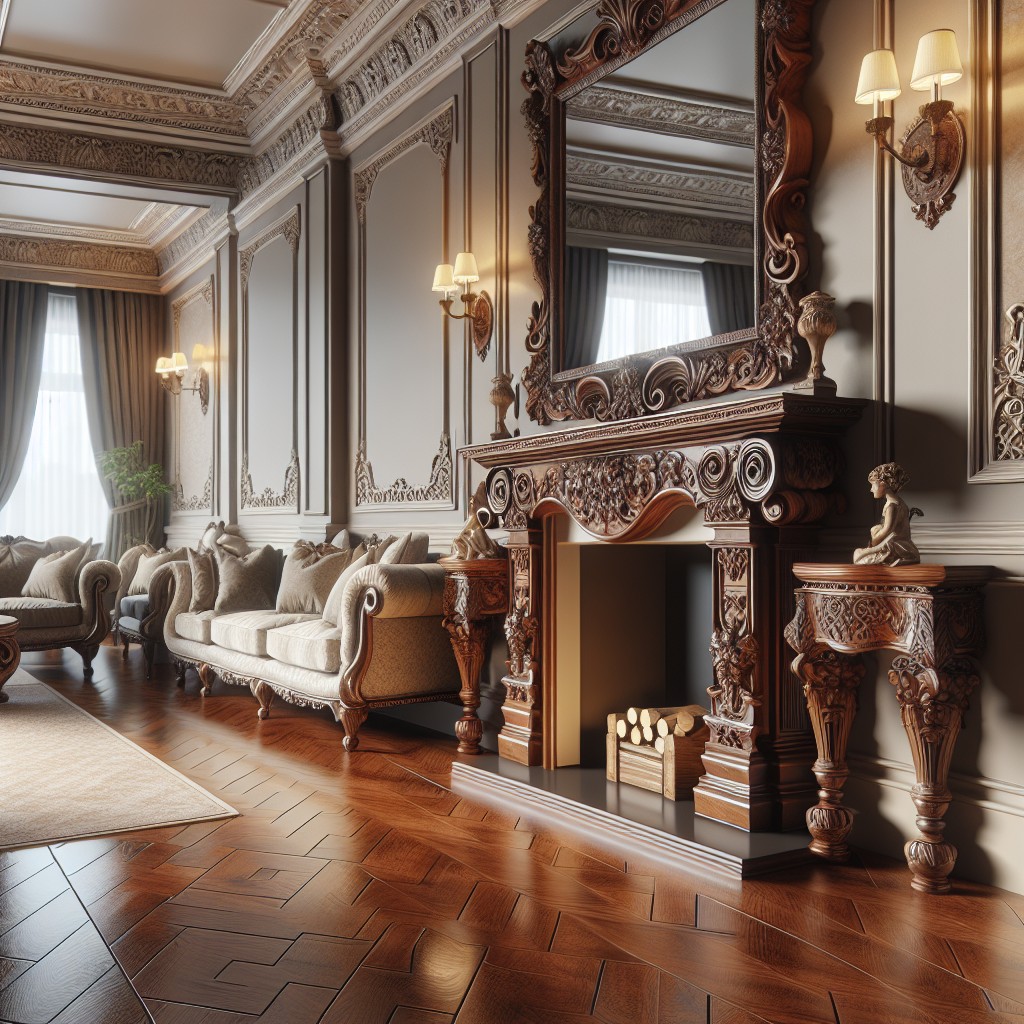
Venturing into a more detailed style, this concept brings an element of traditional craftsmanship into modern material use. We would recommend choosing a reputable manufacturer for such intricate designs to ensure a well-defined, high-quality end product.
1. Versatility: With a selection ranging from floral to geometric patterns, there is a design for every aesthetic preference.
2. Accentuating Roles: Use these artistic pieces to draw attention to your lower walls or to enhance the overall room decor.
3. Installation details: Unlike natural wood, the composite material reduces the risk of chipping during installation due to its resilience.
4. Customization: Some manufacturers offer a custom design service, allowing the creation of a truly unique home environment.
5. Ease of Maintenance: Despite their intricate design, they are easy to clean and maintain because of the hardy composite material. Simply wipe it down with a duster or damp cloth.
Remember, while these boards add flair and intrigue to your room, a balance between their style and the overall decor scheme must be kept for a harmonious environment. Less might indeed be more.
Seaside Style Skirting With Wave Patterns
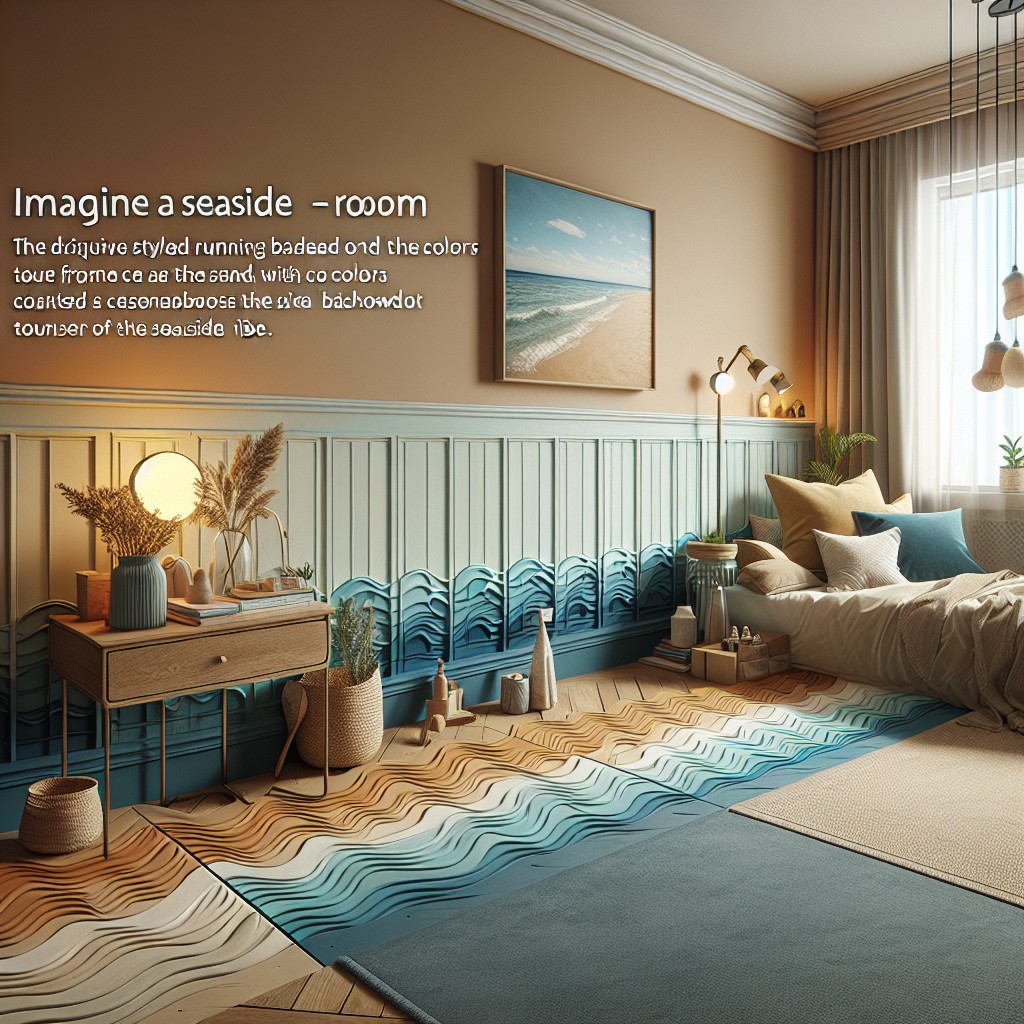
Wave-patterned seaside style can create a relaxing, beach-themed atmosphere right in your home. This unique composite skirting idea captures the spirit of the shore and provides a subtle, stylistic touch to any space.
1. Harmonizes with Coastal Decor: Easy to coordinate with seaside ornaments and furnishings.
2. Emphasizes Nature’s Beauty: The pattern signifies breezy beaches, fostering a sense of tranquility.
3. Versatility: Works in bathrooms, living spaces, or even a themed child’s room.
4. Customizable Color Palette: Typically painted in light shades such as cream, aqua, or light gray, but not restricted to these.
5. Practical and Durable: As with other composite boards, it’s water-resistant, long-lasting, and requires minimal maintenance.
Whether you reside by the shore or simply love the relaxing beach vibe, the wave-patterned seaside style skirting would be a fantastic addition to your decor theme.
Skirting Boards With Abstract Geometric Designs
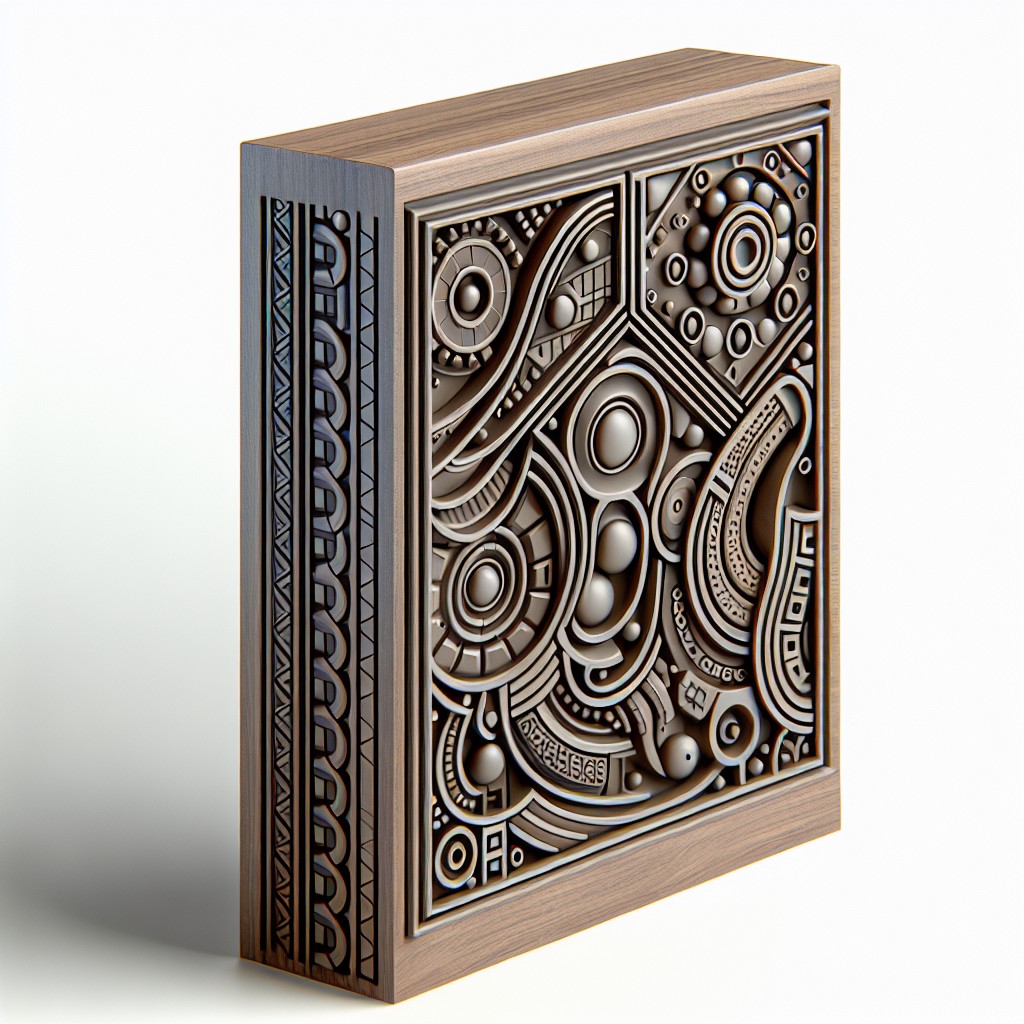
Abstract geometric designs offer a unique spin on conventional skirting boards. This approach adds visual intrigue while maintaining vital practical tasks such as protecting walls from accidental knocks and concealing gaps between walls and flooring.
1. Balance: Abstract designs should hold a sense of equilibrium. Too many sharp angles can feel chaotic, while an excess of soft curves may appear overly subdued.
2. Color: Select hues that complement your space. Bold monochromatic patterns can accentuate modern interiors, while softer contrasts might fit better in traditional settings.
3. Scale: Consider the room’s size when choosing your design. Large patterns can overwhelm small rooms, while delicate detailing may go unnoticed in spacious areas.
4. Practicality: While aesthetics is important, do not forget about functionality. The design should not make cleaning more challenging by accumulating dust in crevices.
5. Placement: Use strategically to draw the eye. Abstract designs can highlight architectural features or become a focal point on their own.
6. Professional Assistance: Abstract designs often require advanced crafting skills. Consulting a professional ensures quality finishing and fitting.
Venturing into abstract geometric designs can drastically upgrade your skirting boards into remarkable architectural details, characterizing your space with individual flair.
